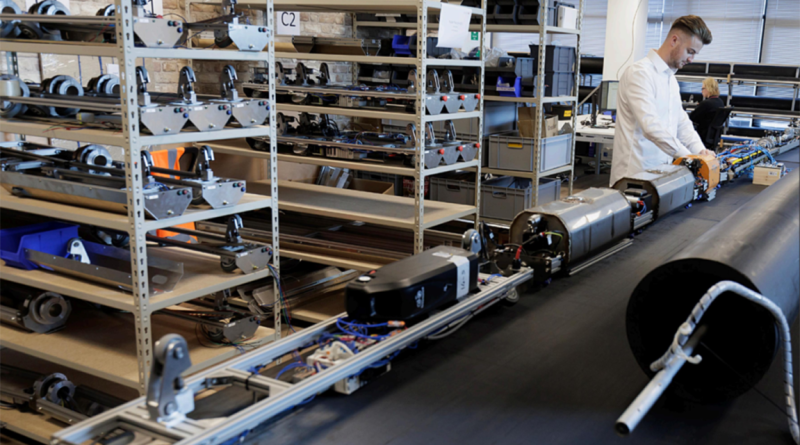Hypertunnel: The Fall of a Construction Tech Pioneer
In the ever-evolving landscape of construction technology, few companies have garnered as much attention as Hypertunnel. Lauded as a revolutionary force in underground construction, the UK-based startup promised to transform the industry with its advanced tunneling technologies. However, despite its early promise, Hypertunnel recently fell into administration, raising critical questions about the sustainability of tech-driven construction startups.
Hypertunnel’s Vision and Technological Innovations That Promised to Revolutionize Tunneling
Hypertunnel was founded with a bold vision: to revolutionize the way tunnels are built. Utilizing cutting-edge technologies such as artificial intelligence (AI), robotics, and advanced materials, Hypertunnel aimed to streamline the tunneling process, making it faster, safer, and more cost-effective. The company’s approach centered on automating the tunneling process through AI-driven machinery that could operate with minimal human intervention, significantly reducing labor costs and timeframes.
The technology was hailed as a potential game-changer for infrastructure projects, especially in densely populated urban areas where traditional tunneling methods often lead to significant disruptions. Hypertunnel’s promise was not just in its technology but in the broader implications for the construction industry—potentially enabling projects that were previously considered too complex or expensive.
However, bringing such a pioneering vision to market is fraught with challenges. The development of Hypertunnel’s technology required substantial investment, not just in research and development but also in overcoming regulatory hurdles, scaling the technology, and gaining the trust of major industry players. While the company made significant strides, it struggled to translate its technological potential into a sustainable business model.
Hypertunnel’s journey from an innovative startup to administration highlights the harsh financial realities faced by construction tech companies. Despite securing initial funding and making impressive progress, Hypertunnel faced a series of financial challenges that ultimately proved insurmountable. These challenges were exacerbated by a broader economic environment that has been particularly unforgiving to startups.
The construction industry, while ripe for innovation, is notoriously conservative when it comes to adopting new technologies. This hesitancy, coupled with the high costs associated with scaling such technologies, placed enormous pressure on Hypertunnel’s finances. Additionally, the global economic downturn and rising inflation have made investors more cautious, leading to reduced access to venture capital—a lifeline for startups like Hypertunnel.
Hypertunnel’s financial struggles were not unique. Many construction tech startups have faced similar challenges in recent years, as the industry grapples with balancing the need for innovation with the financial risks involved. The company’s entry into administration underscores the difficulties of navigating this complex landscape, particularly in a sector where large-scale projects require significant upfront investment and long lead times before any return on investment is realized.
The Broader Implications of Hypertunnel’s Collapse
The collapse of Hypertunnel is not just a story of one company’s struggles but a reflection of broader trends in the construction and technology sectors. As the industry increasingly looks to technology to address challenges such as labor shortages, environmental sustainability, and cost overruns, the pressure on startups to deliver groundbreaking solutions has intensified.
However, Hypertunnel’s experience serves as a cautionary tale. While there is no doubt that technology will play a crucial role in the future of construction, the path to success is fraught with obstacles. The high cost of development, regulatory challenges, and the conservative nature of the industry all contribute to a high-risk environment for startups.
For the construction industry, the fall of Hypertunnel may prompt a reevaluation of how it approaches innovation. Companies and investors alike may become more cautious, leading to a potential slowdown in the adoption of new technologies. On the other hand, it could also drive a more strategic approach to innovation, with a greater focus on collaboration between startups and established industry players to share risks and rewards.
Hypertunnel’s rise and fall offer valuable lessons for the construction industry and the technology startups that seek to innovate within it. While the company’s vision was ambitious and its technology promising, the challenges it faced highlight the complexities of bringing groundbreaking innovations to market in a conservative and capital-intensive industry.
As the construction sector continues to evolve, the need for innovation remains as pressing as ever. However, the experience of Hypertunnel suggests that success will require not just technological prowess but also a keen understanding of the financial, regulatory, and market dynamics that shape the industry. For startups and investors, the road ahead will demand a more measured and collaborative approach to ensure that the next wave of construction technology can fulfill its promise without succumbing to the pitfalls that claimed Hypertunnel.
Sources:
